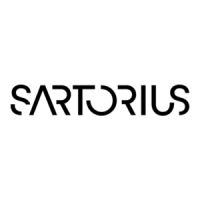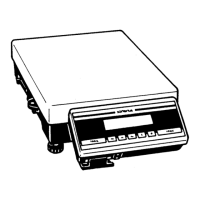Do you have a question about the Sartorius BP 310 S and is the answer not in the manual?
Guidelines for selecting a suitable location for the balance, considering environmental factors.
Procedure for connecting the balance unit to the electronics box using the cable.
Instructions for placing components inside the weighing chamber with an analytical draft shield.
Steps to prepare balances with a round glass draft shield by placing components.
Instructions for preparing balances with a round weighing pan by placing components.
Steps to prepare balances with a rectangular weighing pan by placing components.
Requirement for balance warmup period to ensure accurate results.
How to turn the balance display on and off using the standby key.
Description of the automatic self-test performed after turning on the balance.
Steps for performing internal calibration using the balance's built-in weight.
Information on regular servicing by a Sartorius technician for continued accuracy.
Instructions for safely cleaning the balance using mild detergent and soft cloth.
Checks to ensure safe operation of the balance with the AC adapter.
Procedure to select specific functions by setting respective menu codes using keys.
How to adapt the balance to prevailing ambient conditions at the place of installation.
Explanation of standard weighing and manual filling modes for optimal adaptation.
Settings for the stability symbol display based on weight variation.
Coupling data output with stability parameter for printing or software commands.
Controlling automatic data output (auto print function) by pressing the key.
Setting the menu code for display updates for remote display connection.
Defining the function of the menu access switch for balance operating menu access.
Procedure to block all keys on the balance except for the key.
Program to store tare weight automatically for subsequent weighing operations.
Selecting manual or automatic start modes for animal weighing/averaging.
Overview of connecting Sartorius balances to computers or peripheral devices.
Notes on electrical connection and potential interference when interfacing devices.
Explanation of handshake parameters and their role in data transmission.
Explanation of the CE mark requirements for Sartorius equipment.
Details on the CE marking affixed to equipment meeting specific directives.
Details on the 'New Installation' service package for initial verification and optimal results.
Information on subsequent verifications and their validity according to national regulations.











